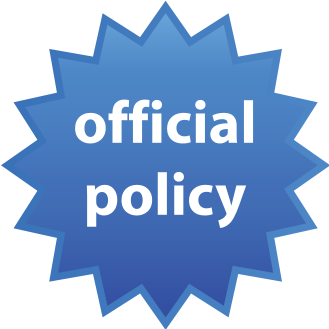Any lesson learning system requires a method for escalating lessons. However escalated lessons may need to break through "knowledge bubbles". How do we reconcile these two issues?
As we have often argued on this blog, the purpose of lesson learning is to drive change and continuous improvement. If nothing changes, nothing has been learned. Each lesson therefore must lead to an action or a request for action, and the action must lead to change. Once the change is made, the lesson has done its job.
But change can be hard when people do not want to change, and where they protect themselves by knowledge bubbles; hearing only what they want to hear. How can we address this issue?
The issue arises when the team that identifies the lesson does not have the authority to make the change, and has to escalate it to a higher level. Maybe the team has identified a company process that needs to be updated or written. Maybe an equipment redesign is needed.
These are actions for either the company process owner or the person who holds the contract with the equipment supplier. Neither of these people is in the team, and the team leader doesn’t have authority to tell them what to do. The action has to be escalated to a level where the required authority lies - perhaps with the head of projects, the leader of a particular functional discipline, or a member of the senior level steering group.
Here we run into the issue of the Knowledge Bubble.
The knowledge bubble is the unwillingness of people to believe new knowledge that contradicts their world-view, for example Stalin's refusal to believe that Hitler was about to invade Russia despite the huge amount of intelligence which proved otherwise. It's not just dictators that face this issue - all of us cherish our own established knowledge and views, and are reluctant to change them.
How then can we ensure that the head of projects, the functional leader and the senior level steering group are not protected by knowledge bubbles, and that they are open to new knowledge supplied through the lessons system? The political version of this is "speaking truth to power", and is not an easy thing. Likewise telling management that change is needed, based on lessons from the troops, can also be difficult at times.
There are 8 ways in which we can help escalated lessons break through any knowledge bubbles./
Here we run into the issue of the Knowledge Bubble.
The knowledge bubble is the unwillingness of people to believe new knowledge that contradicts their world-view, for example Stalin's refusal to believe that Hitler was about to invade Russia despite the huge amount of intelligence which proved otherwise. It's not just dictators that face this issue - all of us cherish our own established knowledge and views, and are reluctant to change them.
How then can we ensure that the head of projects, the functional leader and the senior level steering group are not protected by knowledge bubbles, and that they are open to new knowledge supplied through the lessons system? The political version of this is "speaking truth to power", and is not an easy thing. Likewise telling management that change is needed, based on lessons from the troops, can also be difficult at times.
There are 8 ways in which we can help escalated lessons break through any knowledge bubbles./
1. The senior people need to be involved in, and have ownership of, the lesson learning system. Their roles need to be well defined, and they should have been consulted during the design of the system.
2. The lesson learning system needs to be applied rigorously, so that the senior people can expect to see a flow of escalated lessons as part of normal business.
3. The lesson learning system needs to be quality-controlled and validated, perhaps by the technical experts, so that the senior people know that lessons represent real knowledge rather than opinion. This implies that the documented lessons should show the evidence and the root cause analysis behind the request for change.
4. The lessons must have some measure or description of impact, so the senior people can realise the importance of making the change
5. The lessons must be associated with an author, so the senior people know who to contact for more details
6. The senior people must not be able to reject a lesson without both registering that they are rejecting it, and giving a reason for rejection.
7. The lesson learning system must be monitored and reported to a senior level, so that the organisation knows whether lessons are being consistently ignored or rejected by certain individuals or groups.
8. Through their involvement, management must collectively accept accountability for the operation of the lesson learned system.
In a comment to an earlier version of this post. Lisandro Gaertner said that in his organisation:
"We work with a two step implementation process. First the technical experts assure the quality of the knowledge and, when it needs further actions to implement, it is passed on to the senior leaders who should tell how, when and by who it will be implemented or why it is not going to create changes on the company. The senior leaders are then accountable for the knowledge they didn't implement. It empowers the employees and create a system to fight the knowledge bubble".
This is a combination of many of the approaches above, with emphasis on the assurance role of the experts, and the accountability of management.
Contact knoco for guidance on building a bubble-proof lesson-learning system
Contact knoco for guidance on building a bubble-proof lesson-learning system






























